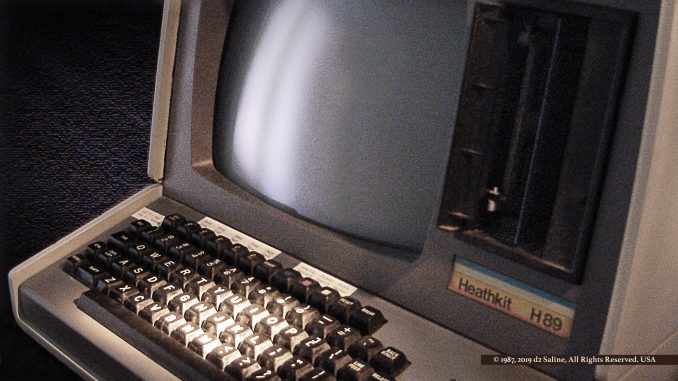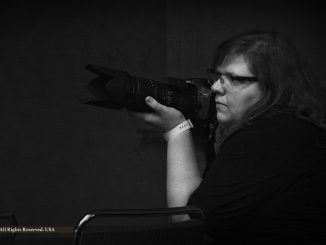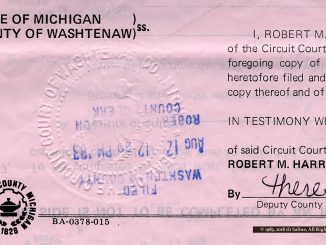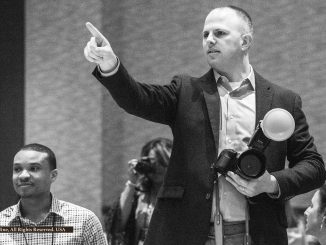
From the Editor—
I’ve been bothered by insistance that “the camera never lies” almost as long as I’ve been using cameras. [1]
My first camera was a gently-used Argus Autronic I 35mm rangefinder film model fitted with a fixed-focal-length Cintar Compur 50mm f/2.8 lens, produced in the early- to mid-1960s. My dad got me started with it later that same decade. [2,3]
It had (and still has) what was commonly referred to at the time as a “normal” focal length lens. The argument here holds that the field of view by which a scene is captured on that then-common medium frame size was equivalent to that of human vision. In the digital age, full frame sensors have replaced 35mm roll stock — coupled with a modern nifty fifty. [4,5]
Many photographers disagree, taking the position that the choice by Sony of 35mm Zeiss Sonnar for its RX1R is closer to the mark. [6]
Actual math says the answer is 43mm, providing a “cone of visual attention” of “about 55 degrees wide.” Currently, it looks like our local Procam has a Tamron 45mm f/1.8 F-mount in stock if you need something to try out on Nikon today. [7]
That’s a lot of subjectivity before we ever get beyond lens choice. Is the photographer using a telephoto from a further distance, or in closer proximety with 28mm guilty of relying upon a less truthful camera? How about a fisheye? [8-10]
Turning to the camera itself, difference in aperture and shutter speed can make for very different end results. These are not only decisions that can and will differ by photographer, but may also be left to the fully automated discretion of the device itself — designed by individuals nowhere near the event being covered for news. [11-13]
And that’s not the end of it.
All of these recorded images must then be processed in order to be viewed by the general public.
Returning to my venerable Argus, film once exposed had to be developed. Then, since most of those images were viewed as prints, subsequent enlarger and chemical bath processes followed — each with their own variables en route to something suitable for framing. Or, in my case when I graduated to the Nikon F3HP, newspapers. [14-16]
The modern day version of this final product is a JPEG. That’s the format most commonly used on the web and shared via eMail. They freqently come about through processing alorythms in users’ cameras that take captured image data as it comes from the sensor, converting it to JPEG. [17]
More variables. Decisions made by someone other than the photojournalist using his or her camera to report on an event as he or she saw it when physically on the scene at the time.
Professionals can overcome this by shooting in “RAW,” subsquently processing that data in any of a variety of computer programs for output to the JPEG images they release to you and me. I shoot RAW better than 99% of the time, meaning that I must process those images before they can be published to Saline Journal. To get there, those images =must= start by going through Adobe Bridge, frequently followed by PhotoShop. [18-22]
My guiding thought process as I move through this workflow is to take what I was able to get with my camera — subject to myriad constraints of available light options, proximity to subject, and timing — and put together a final image for publication that =best represents what I actually saw, in context.
By the way, this is a single image for any given feature article, and seldom more than one or a handful for our visual documentaries on Flickr. Therein lies the role of an functioning editor, as opposed to “editor” for a publication in name only. [23]
That said, I regularly have, without a moment of hesitation, removed what I considered extraneous and distracting elements from photographs, changed lighting, and composited. I’ll continue to do that here again according to the thinking disclosed above.
I have not, however, nor would I ever, use an image that could not reasonably be considered representative of the subject matter covered, aimed my camera in this direction versus that in deference to spin-interests, nor failed to try and correct against any potential for bias in my work.
The output of too many “straight from camera” JPEGers suggests that they couldn’t back similar claims.
Author Ben Long wrote about this issue at length in 2011. “… ‘Photoshop’ is being used to mean ‘edited’ or ‘manipulated’ or ‘altered,’ and the subtext [of the question [is] ‘… I want to know if the image is true.’ [24,25]
… all photos are edited and manipulated. They always have been. Even photos that are very realistic are no more an objective, ‘real’ representation of reality than is a watercolor painting. Photography is an abstract medium ….
‘Image editing’ starts as soon as you lift your eye to the viewfinder. What you choose to include in the frame is a massive edit of the scene before you, and it’s important to understand just how powerful this ‘cropping’ of the real world can be.
I sometimes wonder if cries of “Foul!” via “Photoshopping” are not themselves an effort to distract from the greater accountability that comes from consumer understanding of how much control the camera operator has in publishing images that do or do not lie. [26,27]
That’s where I’d suggest readers aim their eyes in scrutiny.
References
- “The camera doesn’t lie, it just tells a story” Gaby Wood (July 18, 2014) The Telegraph.
- “The Story of Argus Camera” Ann Arbor District Library.
- “Argus Autronic I 35mm rangefinder film camera” Dell Deaton (March 3, 2013) SmugMug.
- “The Camera Versus the Human Eye” Roger Cicala (November 17, 2012) PetaPixel.
- “The ‘Nifty Fifty’ 50mm Exercise: Stay Focused with Doug McKinlay” Adorama (September 8, 2015) YouTube.
- “Sony DSC RX1r Hands On Review” Maarten Heilbron (September 17, 2013) YouTube.
- “Tamron SP 45mm f/1.8 Di VC USD Lens for Nikon F” ProCam.
- “Gabriel Röux, Professional Photographer and Nikon México Ambassador” Dell Deaton (May 26, 2018) Flickr.
- “FIRST Robotics Competition: Belleville Michigan District matches” Dell Deaton (March 7, 2019) Flickr.
- “What is a Fisheye Lens?” Marques Brownlee (November 30, 2011) YouTube.
- “Engadget Primed: What is aperture, and how does it affect my photos?” Sean Arbabi (December 27, 2011) Engadget.
- “Photography for Beginners – Shutter Speed Explained DIY in 5 Ep 31” Kingston Technology (December 2, 2016) YouTube.
- “Aperture, Shutter Speed, ISO, & Light Explained-Understanding Exposure & Camera Settings” Tony & Chelsea Northrup (May 20, 2013) YouTube.
- “Darkroom Photography Techniques : How to Develop 35mm Film” eHow (July 14, 2009) YouTube.
- “Making Your First Black & White Print” ILFORD Photo (February 26, 2018) YouTube.
- “35mm Photography and the Nikon F3” The Art of Photography (August 4, 2013) YouTube.
- “What is the JPEG graphics file format?” Indiana University.
- “Photography 101: RAW vs JPEG | The Ulimate Visual Guide” SLR Lounge.
- “Digital Photography RAW vs JPEG Part 1” Jared Polin (July 13, 2010) YouTube.
- “JPG vs Raw (Jared Polin response)” Tony & Chelsea Northrup (November 17, 2017) YouTube.
- “Adobe Bridge” Adobe.
- “Adobe Photoshop” Adobe.
- Dell Deaton (Flickr Photostream).
- Ben Long (Facebook Page).
- “All Photos Are Manipulated” Ben Long (August 3, 2011) Creative Pro.
- “The Associated Press Is Not ‘Vogue,’ Fired Photoshopping Photographer Learns” Sara Morrison (January 22, 2014) The Atlantic.
- “Manipulating Truth, Losing Credibility” Frank Van Riper, The Washington Post.



